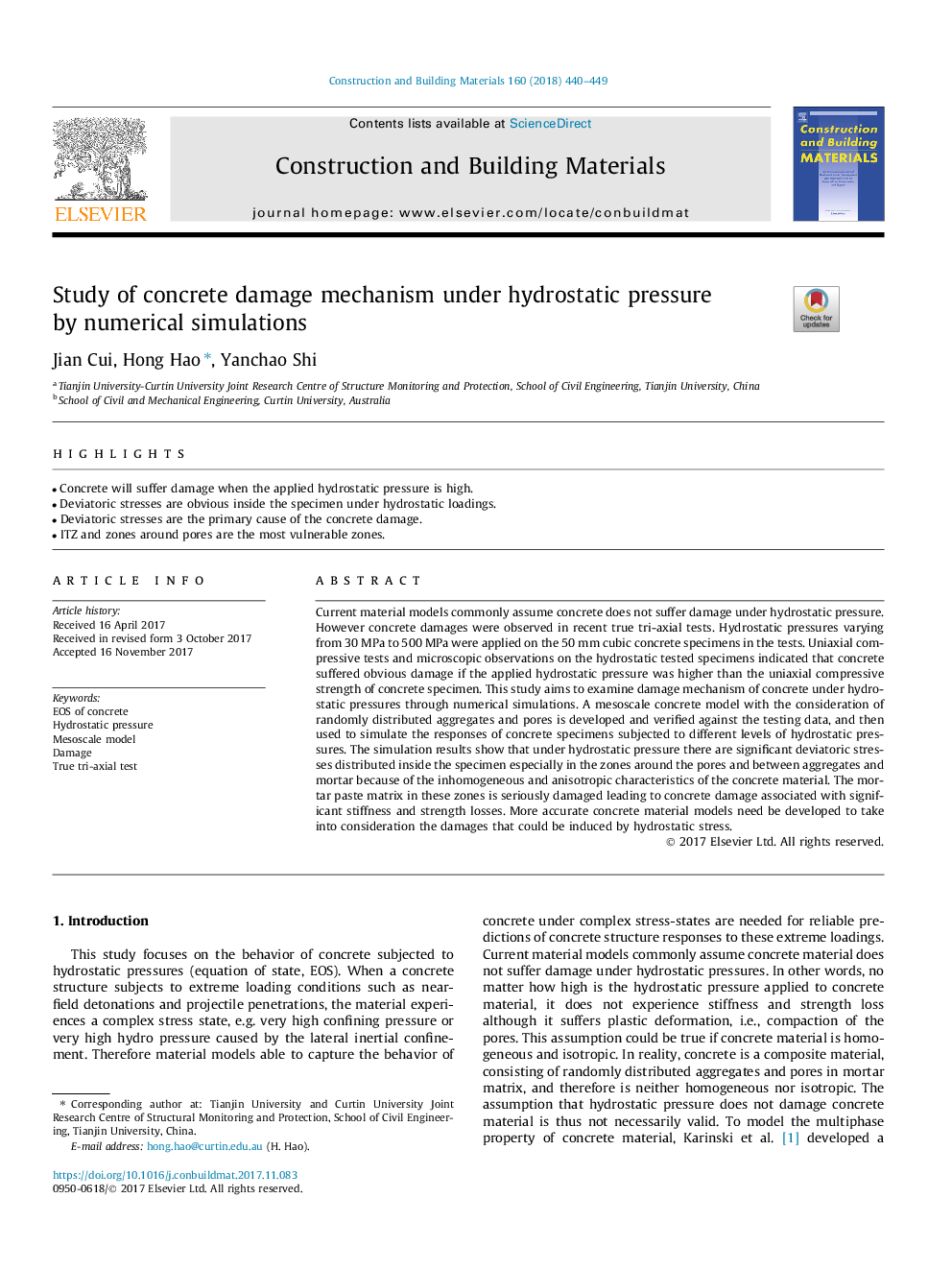| Article ID | Journal | Published Year | Pages | File Type |
|---|---|---|---|---|
| 6717083 | Construction and Building Materials | 2018 | 10 Pages |
Abstract
Current material models commonly assume concrete does not suffer damage under hydrostatic pressure. However concrete damages were observed in recent true tri-axial tests. Hydrostatic pressures varying from 30â¯MPa to 500â¯MPa were applied on the 50â¯mm cubic concrete specimens in the tests. Uniaxial compressive tests and microscopic observations on the hydrostatic tested specimens indicated that concrete suffered obvious damage if the applied hydrostatic pressure was higher than the uniaxial compressive strength of concrete specimen. This study aims to examine damage mechanism of concrete under hydrostatic pressures through numerical simulations. A mesoscale concrete model with the consideration of randomly distributed aggregates and pores is developed and verified against the testing data, and then used to simulate the responses of concrete specimens subjected to different levels of hydrostatic pressures. The simulation results show that under hydrostatic pressure there are significant deviatoric stresses distributed inside the specimen especially in the zones around the pores and between aggregates and mortar because of the inhomogeneous and anisotropic characteristics of the concrete material. The mortar paste matrix in these zones is seriously damaged leading to concrete damage associated with significant stiffness and strength losses. More accurate concrete material models need be developed to take into consideration the damages that could be induced by hydrostatic stress.
Related Topics
Physical Sciences and Engineering
Engineering
Civil and Structural Engineering
Authors
Jian Cui, Hong Hao, Yanchao Shi,
